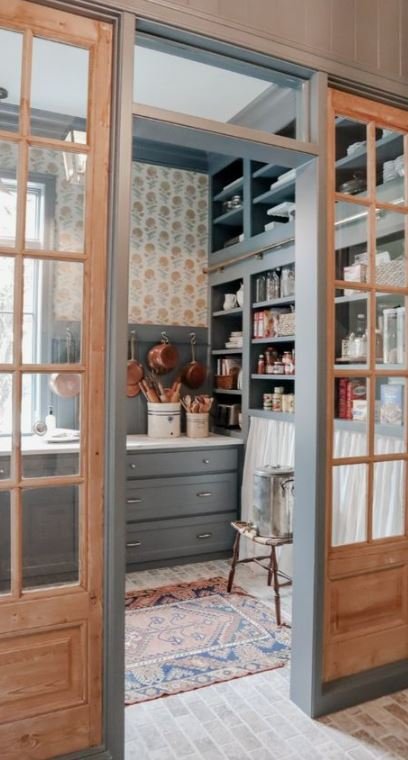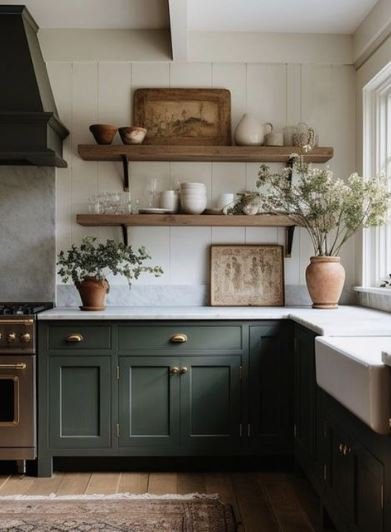How to plan a whole of home colour palette
One of the mistakes I see across homes of my clients is that people look at each room of the home in isolation, rooms are painted in a variety of different colours without a plan in place for the home. Usually, it is that you saw that colour on Instagram and decided to paint your room or your friend has that colour kitchen so you decided to get the same. Honestly there is nothing wrong with this approach, it is usually due to budget you don’t paint your house all in one go so why would you plan it that way? But if you do want your home to feel cohesive you really are going to have your work cut out for you with this approach.
In this post we are going to be doing a deep dive into creating a cohesive whole of home colour palette, so you will be the envy of everybody. The key is to create a plan, like so much of design is, so we are going to run through the general guidance, let’s dive in, shall we?
1. The Things I Can’t Change
One thing that is important is that we really need to focus on the space and the light rather than the paint. What I mean by this is that light has a major effect on paint, so where your windows are in your space means that different rooms have different types of light whether your home is North, South, East or West.
Another factor is the things you cannot change, like maybe wood beams in a cottage or some traditional wood flooring or kitchen cabinetry or your bathroom hardware. it doesn’t mean to say that you can’t change the wood tones with different stains but only if you can afford to make those changes – therefore it becomes a ‘thing you can’t change’. From here this is when we start to build our colour palette, if your ‘things you cannot change’ what are these colours?
Are they earthy and highly saturated or are they pastel and muted. Keep a note of them. Ultimately what we are looking to build is a bank of colours that all look great together as your whole of home colour palette.
2. Start at the Beginning
The hallway is a great place to start. You will be able to see so many rooms from the hallway and vice versa – what we call sightlines. It is easier to start here as it would take you forever if you did all the rooms first and then tried to find that perfect colour what worked with all of them. I like to opt for a great neutral – if you are working with an earthy colour palette, I like to go for something off-white, warm but not stark. Don’t forget to get samples and try then out in your space - you are linking everything back to your whole of home colour palette.
Image Credit: The Modern House
Keeping the Hallway Neutral
3. Pick a Trim and Ceiling Colour
Some rooms you might get creative and opt for some colour drenched woodwork this means painting the skirting and cornice, but otherwise you need a great neutral for your other woodwork (architraves, stairs) and your ceilings. This is a different one to your hallway, something lighter than your hallway and works with your ‘things you cannot change’ and links everything back to your whole of home colour palette.
Image Credit: Farmhouse Living
4. Where you eat
The kitchen is a great place to go a little bit more daring on either the cabinetry or the walls. I prefer to leave my walls a bit more neutral, not as neutral as the trim or the hallway and then I prefer to add colour with the cabinetry, mix it up with the island as well– you will be using this room at so many points of the day, morning, noon and night. Make sure you grab your samples, but them up and then look at them at the main times you use the kitchen, make sure you like them and that they link with the rest of your whole of home colour palette.
Image Credit: Nikki’s Plate
5. The Living Room
The living room is a place you can amp it up even more! This is a place where so often you will be using this in the evening and that is something to consider as you want the colour to look great in the evening under artificial light. This can allow you to get that little bit more immersive and moodier, making it feel like a night time sanctuary.
6. Extend the Palette
Now we have all our main living areas sorted, we go on and extend the palette, keeping with the same cohesive feeling we aren’t forgetting the rest of the colour palette.
I always think that downstairs toilets and office/library space can be a place to really enjoy those pops of colour, especially if your palette is feeling a little lacklustre and get creative with some colour drenching or some fabulous wallpaper.
With bedrooms, you really want people who live in the space to do be able to demonstrate their personalities – so if you child’s favourite colour is pink then you will be able to pick a pink that works with the rest of the whole of home colour palette. Order samples and play around!
Image Credit: Living ETC
7. Double Up on Functionalities
If your home is big then you will want to keep your OG palette to a minimum dependant on house size you are really only going to have 5-8 colours in your whole of home palette. To keep it tight and cohesive you can double up on functionalities, this means if you have rooms that are linked by person or function then it might be a good idea to paint both rooms the same colour – for example your child’s bedroom and playroom. The bathroom is another way to get creative with this – you could paint the bathrooms the same colour but mix it up by using different colour tiles, flooring or stone.
8. Surprise and Delight
What I mean by surprise and delight – I can always manage to encourage clients to go for this option, say you aren’t all that brave with colour and prefer to opt for a neutral scheme then a way to not only bring intrigue, but to surprise and delight you add some pops of colours into the insides of your cabinetry or wardrobes - this really amps up your interiors.
Image Credit: Kezza Beth
9. The ‘Red’ Thread
Now I have discussed this idea before, but I will just go through a brief overview. It is basically the idea that there is one thing that repeats in all rooms in your home. So, mine is black, my stairs and landing is black, there is black panelling in my bathroom, a black curtain pole in my dining room, black light fitting in the front room, black handles on my cabinetry in the bedroom and black office chairs in the office. It is subtle, but it is there, and it gently ties all the room together.
So creating a cohesive colour palette for your home is not just about individual room colours but rather about crafting a unified visual narrative throughout your space. By thinking about factors such as natural light, the things you can't change, and the flow between rooms, you can develop a plan that ties everything together harmoniously. Starting with neutrals in key areas like the hallway provides a solid foundation, while allowing for creative expression in spaces like the kitchen and living room adds depth and personality.
Extending this palette throughout the home, doubling up on functionalities where possible, and incorporating unexpected pop of colour can elevate the design to a new levels.
Don't forget the 'red thread'—the subtle yet impactful element that subtly connects each room, providing a sense of continuity and coherence all within the whole of house colour palette that your building. With thoughtful planning and attention to detail, your home can become a truly seamless and inviting environment that reflects your unique style and personality.
I know this is a lot to think about, but take your time. I can always help, explore my services here.





